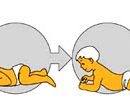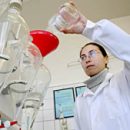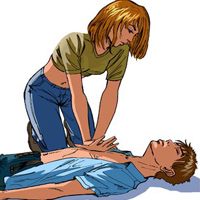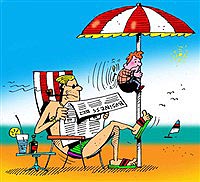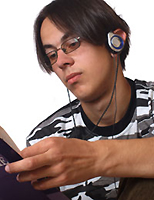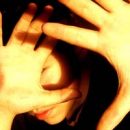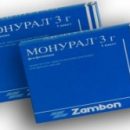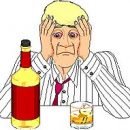Raise and care for sick cerebral palsy (cerebral palsy) is very difficult. Some of them cannot move their hands and legs, do not chew and do not even swallow - they are feeding with a carbon black through the probe. In 50% of cases, they are lagging behind the rest of the children not only in physical, but also in intellectual development.
Content
Physical rehabilitation
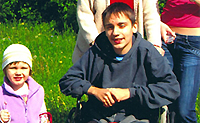 One of the most important methods for the treatment of children's cerebral paralysis is physical rehabilitation, which begins in the first months of the child's life, immediately after establishing a diagnosis. At the same time, the sets of exercises are applied to two important goals - to prevent the weakening and atrophy of the muscles, as a result of insufficient use of their use, as well as to avoid the development of contractures, in which spastically stressful muscles become low-propelled and fixed the limbs of the patient in the pathological position.
One of the most important methods for the treatment of children's cerebral paralysis is physical rehabilitation, which begins in the first months of the child's life, immediately after establishing a diagnosis. At the same time, the sets of exercises are applied to two important goals - to prevent the weakening and atrophy of the muscles, as a result of insufficient use of their use, as well as to avoid the development of contractures, in which spastically stressful muscles become low-propelled and fixed the limbs of the patient in the pathological position.
Contracts are one of the most frequent and most serious complications of cerebral paralysis. A healthy child, muscles and tendons are regularly stretched while walking, running and everyday motor activity. It provides muscle growth at the same speed as the growth of bones. In children with cerebral paralymps, the spacious prevents muscle stretching, as a result of which they grow not quickly and lags behind the bone length. Formation of contractures in patients with cerebral palsy can lead to a deterioration in equilibrium and loss of previously acquired skills. The physical rehabilitation program should send an effort to avoid this undesirable complication by stretching spastic muscles.
The third important goal of physical rehabilitation is to promote the motorcy of the child. A common program of physical rehabilitation aimed at developing movements is the therapy according to the method of Bobat, which was developed by Dr. Karel Bobat and his wife Berthr. This program is based on the idea that primitive designers of early age, which in children with cerebral paralympics do not disappear, and persist and strengthened, are the main obstacle to the implementation of volitional controls.
Rehabilitols applying the Bobat method are trying to counteract these reflexes by positioning the child, that is, give it the right position of the body necessary to perform certain movements.
As the child grows with children's cerebral paralysis and approaching school age, accents of treatment are shifted to ensuring its early engine development to his adaptation in society. Now the efforts of physical rehabilitation are sent to the formation of skills of everyday life, the development of the ability to communicate and preparing a child to life in the team. Physical rehabilitation should now be more aimed at developing the possibility of moving independently, with the help of sticks or in a wheelchair, as well as carry out such accurate and complex operations as a letter.
It is also important to direct the effort to teach the child yourself there, dress, use the bathroom and toilet. Mastering these skills can significantly facilitate the duties of people who care for the child, as well as significantly increase the self-confidence and self-esteem of the patient.
Conductive pedagogy (Peting method)
Conductive pedagogy was designed after World War II by the Hungarian doctor and the teacher Andrah Peto. At first, this approach was used only at the Institute of Conductive Pedagogy in Budapest, which carries the name of the author. Over time, this method has gained popularity and began to be applied in many countries of the world.
According to Prof. BUT. Peto, motor disorders develop not only due to damage to motor systems of the brain, but also due to the insufficiency of coordination and interaction between different brain departments and their functions. It is this ability to the nervous system that can be mobilized by the directional and active learning process.
Conductive pedagogy is aimed at different aspects of the development of the child and his personality. The philosophy of orthofunctionation is consonant with modern representation, as it supports the importance of the existence of various ways to achieve functional purposes, which depend on the possibilities of the child and environmental conditions.
In traditional programs of conductive pedagogy in Hungary, specialists are planning and conducting a program fulfilling the role and physician and physician. They have a four-year university education with an emphasis on special pedagogy.
Classes are conducted in specialized groups with a number from 10 to 25 children, with the same type of cerebral paralysis forms. Children engage together, watch and encourage each other. Conductors lead a group and provide motivating environment and emotional support. The purpose of the program is determined by the overall level of development of the group and the skills of each individual child. It is designed for years of joint long-term work with a sick child. Classes in groups are structured and carried out according to the developed program. The program includes blocks that consist of exercise complexes and pedagogical classes conducted in a game form. Complexes of exercises, as well as the tasks of the included in them, are selected depending on the nature of the pathology of the child, motor and intellectual possibilities. All exercises of the complex are based on physiological movements. The complex includes exercises with different subjects and sports guns, exercises with the ball, on the steps, on the gymnastic shop, with a gymnastic stick, and also complemented by walking and exercises near the Swedish wall. When conducting motor exercises, furniture-ladders, tables, boxes made of wooden rounded lacquered planks are used for this technique.
During classes, rhythm and songs are widely used, which is called «Rhythmic intent» (Rhythmіcal Іntentіon). The rhythmic intention is verbal rhythmic instructions that are served during the execution of a series of tasks. With the help of rhythm, songs and poems, the background rhythm of motor activity is given, which assists the learning and motivation of the child, as well as helping to draw attention to the movement that is currently being carried out.
The effectiveness of the participation of the child in the rehabilitation process depends largely on its motivation. As a rule, children with children's cerebral palsy are more passive in their actions. The method of conductive pedagogy requires the active participation of the child in overcoming its motor inferiority. Properly set goal gives the child a proper motivation for classes, raises his self-esteem. The program of classes provides for the continuous participation of the child in different types of activities that children teach to think and act in different situations. Of great importance in the formation of motivation has the desire of a child to success and achieve the predicted result. Therefore, even a very slight success receives positive support and encouragement from conductors.
Loop therapy
The method of therapy, also known as the reflex-locomotion method, was developed by the Czech physician Vaclav Vojta in the early 50s.
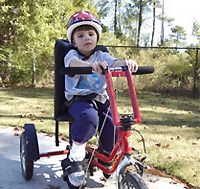 This method of reducing treatment was created empirically, in the study of motor reactions observed in response to a specific stimulation conducted in certain positions of the child. Dr.Loop found that this stimulation causes global dynamic muscular activity present in all forms of human locomotion. «Global models» First described by Dr. Loop back in 1964, served as theoretical basis of the reflex-locomotion method. Term «Global locomotions» Indicates motor responses arising during the application of the reflex-locomotion method. At the same time, the skeletal muscles of the entire body are coordinated activated, the impulses come to all regulatory links of the nervous system, which contributes to the formation of new reflex ties. Not only skeletal muscles are involved in this process, but also mimic, eye, respiratory muscles, as well as muscles involved in swallowing movements, intestinal peristalsis and bladder.
This method of reducing treatment was created empirically, in the study of motor reactions observed in response to a specific stimulation conducted in certain positions of the child. Dr.Loop found that this stimulation causes global dynamic muscular activity present in all forms of human locomotion. «Global models» First described by Dr. Loop back in 1964, served as theoretical basis of the reflex-locomotion method. Term «Global locomotions» Indicates motor responses arising during the application of the reflex-locomotion method. At the same time, the skeletal muscles of the entire body are coordinated activated, the impulses come to all regulatory links of the nervous system, which contributes to the formation of new reflex ties. Not only skeletal muscles are involved in this process, but also mimic, eye, respiratory muscles, as well as muscles involved in swallowing movements, intestinal peristalsis and bladder.
The engine reactions described are caused by dosage pressure on certain parts of the patient's body located in a certain position on the abdomen, or on the side. These «Global models» are part of various human motor acts - grabbing, turning, crawling and walking. They constitute a basis for motor rehabilitation of patients of different age groups - newborns, children, adolescents and adults.
Thanks to its research. IN.Loop revealed that reflex reactions that occur in patients with motor disorders are similar to the reactions of healthy children. This meant that you can stimulate the formation of important motor models at an early age, that is, to create the necessary «building blocks», Important for early engine development.
The purpose of the reflex-locomotion method is the development of the child's body control skills, the formation of the support function of the limbs and the stimulation of coordinated muscle activity. These skills are in different degrees violated in all patients with central and peripheral impaired nervous system, as well as in patients with impaired musculoskeletal apparatus of various etiology. Arising from these lesions, pathological motor models, can be corrected using the reflex-locomotion method.
The rod method of the reflex locomotion is the use of two, so-called - coordination complexes: reflex of crawling and coup reflex. Both of these reflex were studied in patients with motor disorders (spastic paralymps), as well as in healthy newborn and young children.
Therapeutic effect when therapy is mode can be achieved with a frequent repetition of exercises for a long time. At the same time, the parents of the patient are involved in the medical process, who undergo the necessary course under the guidance of a specialist in therapy, followed by a complex of treatment at home. Exercise is made in fixing the child in the necessary pose of reflex and hand pressure on the selected area of influence. After the appearance of a visible response reflex movement caused by the influence of a child, this exercise is regularly repeated during the course of treatment. The choice of influence zone is carried out individually, depending on the motor disorders and the intensity of the response.
At the same time, it is important to note that the reflex locomotion is not aimed at training a certain functional movement, for example, grabbing with a brush or turning from the back on the belly. It helps the nervous system to create the necessary models of coordinated muscle work, which subsequently can be used to build the necessary movements.

